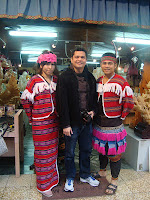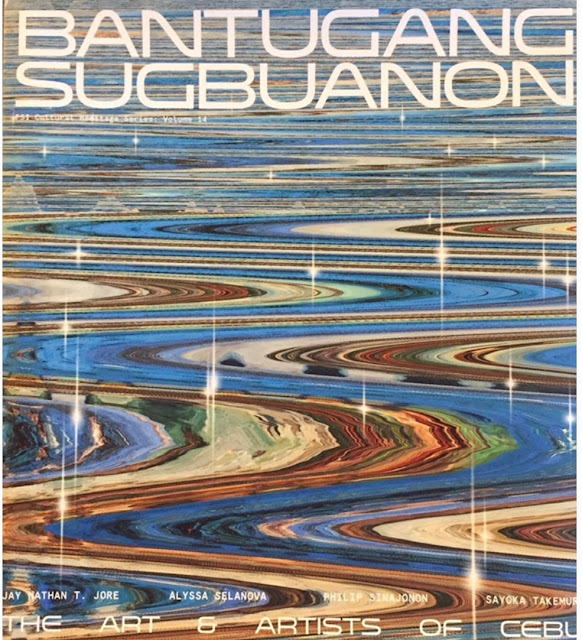The Atayal Aborogines of Taiwan
Before the Ha n Chinese immigration began in the mid-1600s, Taiwan was inhabited by people belonging to the Austronesian race, the members of which lived in a vast area extending from Madagascar in the west to Hawaii and Easter Island in the east, and from New Zealand in the south to Taiwan in the north. Taiwan's aborigines are believed to have come from the Malay archipelago in different waves about 6,000 years ago at the earliest and less than 1,000 years ago at the latest. Since their languages are very different--more varied than those of the Philippines--some scholars suggest that Taiwan is the original homeland of all Austronesians. Archeological findings indicate that Taiwan had been inhabited by other people before the current aborigines came. However, little is known about them, particularly when and why they disappeared.
n Chinese immigration began in the mid-1600s, Taiwan was inhabited by people belonging to the Austronesian race, the members of which lived in a vast area extending from Madagascar in the west to Hawaii and Easter Island in the east, and from New Zealand in the south to Taiwan in the north. Taiwan's aborigines are believed to have come from the Malay archipelago in different waves about 6,000 years ago at the earliest and less than 1,000 years ago at the latest. Since their languages are very different--more varied than those of the Philippines--some scholars suggest that Taiwan is the original homeland of all Austronesians. Archeological findings indicate that Taiwan had been inhabited by other people before the current aborigines came. However, little is known about them, particularly when and why they disappeared.
 n Chinese immigration began in the mid-1600s, Taiwan was inhabited by people belonging to the Austronesian race, the members of which lived in a vast area extending from Madagascar in the west to Hawaii and Easter Island in the east, and from New Zealand in the south to Taiwan in the north. Taiwan's aborigines are believed to have come from the Malay archipelago in different waves about 6,000 years ago at the earliest and less than 1,000 years ago at the latest. Since their languages are very different--more varied than those of the Philippines--some scholars suggest that Taiwan is the original homeland of all Austronesians. Archeological findings indicate that Taiwan had been inhabited by other people before the current aborigines came. However, little is known about them, particularly when and why they disappeared.
n Chinese immigration began in the mid-1600s, Taiwan was inhabited by people belonging to the Austronesian race, the members of which lived in a vast area extending from Madagascar in the west to Hawaii and Easter Island in the east, and from New Zealand in the south to Taiwan in the north. Taiwan's aborigines are believed to have come from the Malay archipelago in different waves about 6,000 years ago at the earliest and less than 1,000 years ago at the latest. Since their languages are very different--more varied than those of the Philippines--some scholars suggest that Taiwan is the original homeland of all Austronesians. Archeological findings indicate that Taiwan had been inhabited by other people before the current aborigines came. However, little is known about them, particularly when and why they disappeared.
When the Han Chinese came to Taiwan, they divided, for convenience, the aborigines into P ingpu (plains) people and Kaoshan (mountain) people. They further subdivided the Pingpu people into 10 tribes and the Kaoshan people into nine. These labels are misnomers, for they don't reflect cultures and languages, or place of residence, properly. A tribe in one division often has more similarity with one in another division than with one in its own division, and the tribes of "mountain people" don't live in mountains at all. One of the 9 mountain tribes are the Atayals. The Atayal are distributed over a large area in n
ingpu (plains) people and Kaoshan (mountain) people. They further subdivided the Pingpu people into 10 tribes and the Kaoshan people into nine. These labels are misnomers, for they don't reflect cultures and languages, or place of residence, properly. A tribe in one division often has more similarity with one in another division than with one in its own division, and the tribes of "mountain people" don't live in mountains at all. One of the 9 mountain tribes are the Atayals. The Atayal are distributed over a large area in n orthern Taiwan. Their language can be divided into the Atayal and Sediq branches and is not closely related to any other aborigine language. Atayal men are good hunters, and Atayal women good weavers. In the past, facial tattooing among men and women, for beauty and distinction and to ward off evil spirits, was a feature of this tribe. This practice has been outlawed since the Japanese occupation (1895-1945). Now only those Atayals over 80 years old still have tattoos on their faces. They have a native bamboo dance similar to the Philippines "tinikling".
orthern Taiwan. Their language can be divided into the Atayal and Sediq branches and is not closely related to any other aborigine language. Atayal men are good hunters, and Atayal women good weavers. In the past, facial tattooing among men and women, for beauty and distinction and to ward off evil spirits, was a feature of this tribe. This practice has been outlawed since the Japanese occupation (1895-1945). Now only those Atayals over 80 years old still have tattoos on their faces. They have a native bamboo dance similar to the Philippines "tinikling".
The Atayal kinship system is patrilineal. Leaders of several religious groups of a community usually constitute the political authority. The prototypical Atayal house is either semi-subterranean or built at ground level, and is made of wood and thatch. There is a watch tower for each cluster of houses.
Wulai Atayal Museum. With its scenic beauty and diverse cultural charms,  ingpu (plains) people and Kaoshan (mountain) people. They further subdivided the Pingpu people into 10 tribes and the Kaoshan people into nine. These labels are misnomers, for they don't reflect cultures and languages, or place of residence, properly. A tribe in one division often has more similarity with one in another division than with one in its own division, and the tribes of "mountain people" don't live in mountains at all. One of the 9 mountain tribes are the Atayals. The Atayal are distributed over a large area in n
ingpu (plains) people and Kaoshan (mountain) people. They further subdivided the Pingpu people into 10 tribes and the Kaoshan people into nine. These labels are misnomers, for they don't reflect cultures and languages, or place of residence, properly. A tribe in one division often has more similarity with one in another division than with one in its own division, and the tribes of "mountain people" don't live in mountains at all. One of the 9 mountain tribes are the Atayals. The Atayal are distributed over a large area in n orthern Taiwan. Their language can be divided into the Atayal and Sediq branches and is not closely related to any other aborigine language. Atayal men are good hunters, and Atayal women good weavers. In the past, facial tattooing among men and women, for beauty and distinction and to ward off evil spirits, was a feature of this tribe. This practice has been outlawed since the Japanese occupation (1895-1945). Now only those Atayals over 80 years old still have tattoos on their faces. They have a native bamboo dance similar to the Philippines "tinikling".
orthern Taiwan. Their language can be divided into the Atayal and Sediq branches and is not closely related to any other aborigine language. Atayal men are good hunters, and Atayal women good weavers. In the past, facial tattooing among men and women, for beauty and distinction and to ward off evil spirits, was a feature of this tribe. This practice has been outlawed since the Japanese occupation (1895-1945). Now only those Atayals over 80 years old still have tattoos on their faces. They have a native bamboo dance similar to the Philippines "tinikling".
 Wulai District offers a perfect rustic retreat close to Taipei City. Visitors can explore the indigenous culture and history of Wulai at the Wulai Atayal Museum of New Taipei City, situated at the entrance to the Wulai shopping area. The four-story museum presents displays on the history, culture, customs, religious faith, rituals and festivals of the Atayal people as well as the natural ecology of the Wulai area.
Mountain peaks, valleys, waterfalls, hot springs, old-growth forests, and other natural attractions create a perfect setting for a scenic excursion, fitness walks, spring soak and cherry blossom watching. Visitors can also ride on a train and feast on the local indigenous cuisine; experience the living traditions of the Atayal people through tribal festivals.
Wulai District offers a perfect rustic retreat close to Taipei City. Visitors can explore the indigenous culture and history of Wulai at the Wulai Atayal Museum of New Taipei City, situated at the entrance to the Wulai shopping area. The four-story museum presents displays on the history, culture, customs, religious faith, rituals and festivals of the Atayal people as well as the natural ecology of the Wulai area.
Mountain peaks, valleys, waterfalls, hot springs, old-growth forests, and other natural attractions create a perfect setting for a scenic excursion, fitness walks, spring soak and cherry blossom watching. Visitors can also ride on a train and feast on the local indigenous cuisine; experience the living traditions of the Atayal people through tribal festivals.






